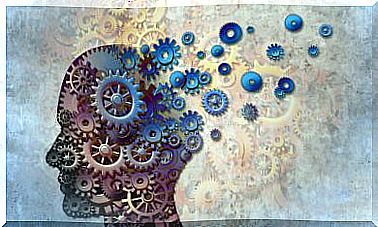Migraines With Vomiting: A Look At Mental Health

Few things can affect a person’s health more than migraines. If they are also accompanied by nausea and vomiting, the discomfort may not last only for the days that it manifests itself, but may imply a psychological and chronic fear with its appearance.
There are many types of migraines and each of them has its own peculiarity. If we focus on those that are accompanied by nausea and vomiting, the person’s disability is almost total.
It is essential that those affected learn to identify their symptoms and know how to manage them. If someone endures pain to the limit for different reasons, they must be treated physically and psychologically in order to cope with the disease and change their coping.
For a person who must endure incessant pain in the head and endure the consequences of continued vomiting, the psychological consequences of this disease can be very harsh.
What are migraines
A migraine is a type of headache that tends to recur and causes moderate to severe pain. The pain is often described as throbbing or throbbing and usually begins on one side of the head.
The pain usually lasts between 4 hours and 3 days. During a migraine episode, you can be especially sensitive to light, sounds, and even smells.

The heritability of migraines
Migraines tend to run in families. Up to four out of five people with migraines have a family history. If one of the parents has a history, the child has a 50% chance of developing them. If both parents have a history of migraines, the risk increases to 75%.
What happens in the brain with migraine?
Usually the susceptibility to migraine is inherited. Parts of the brain that use monoamines, such as serotonin and norepinephrine, appear to be in a state of hypersensitivity. They react quickly and excessively to certain stimuli.
Essentially, migraine is caused by the interaction between the brain and the cranial blood vessels. Treatment may be directed at the constriction of the dilated arteries to decrease pain as it occurs, or at the tissues that are capable of “producing” pain.
What are the symptoms
The quintessential symptom is headache. The pain can start out as mild, moderate, or severe. If left untreated, the headache will turn moderate to severe. The pain may travel from one side of the head to the other, or it may affect the front of the head or feel like it is affecting the whole head.
Most migraines last about 4 hours, although severe ones can last much longer and even become daily. It is common to have two to four migraines a month. However, some people have daily headaches while others only have migraines once or twice a year.
What triggers a migraine?
Migraine attacks can be triggered by a variety of factors. Common triggers include the following:
- Emotional stress: During stressful events, certain chemicals are released in the brain to fight them. Arousal can increase muscle tension and dilate blood vessels, which can aggravate a migraine.
- Sensitivity to chemicals and preservatives: Certain foods and beverages, such as aged cheese, alcoholic beverages, chocolate, and food additives (such as nitrates in sausages) may be responsible for triggering the pain.
- Caffeine – Consuming too much caffeine, or abruptly limiting your intake when taken on a regular basis, can cause headaches.
- Hormonal changes in women: Migraines in women are most common around the time of their menstrual periods. The abrupt drop in estrogen that triggers menstruation can also trigger migraines.
- Certain Medications That Inflame Blood Vessels: Overuse or daily use of headache relief medications can also cause migraine headaches.
- Heat: exceeding 35 degrees, a person suffering from migraines may already notice incessant discomfort.
Migraine and psychological health
For those who experience them, chronic migraines can disrupt daily activities and reduce quality of life. If they are also accompanied by nausea and vomiting, the impact on daily life will be even greater.
Everyone with a migraine has a sense of anticipation of their pain. As soon as the pain sets in, many people already predict whether they will vomit if they cannot control their nausea. At this point, the psychological factor and the management of the situation is key.
Psychological treatment for migraine

Clearly, both the psychological and physical aspects of migraine need to be addressed. The good news is that there are effective treatments for anxiety and depression, such as cognitive behavioral therapy (CBT) and interpersonal therapy , and that these are also beneficial for migraines.
Some studies have found that behavioral therapies, such as relaxation techniques and biofeedback training, are also effective in treating migraines. The goal of these treatments is to help people learn how to promote feelings of relaxation and calm.
As our understanding of migraines improves, important implications emerge. First, it is important for doctors to understand the relationship between migraines and mood. Regular detection of problems such as depression and anxiety in those affected can help them get the psychological help they need.









